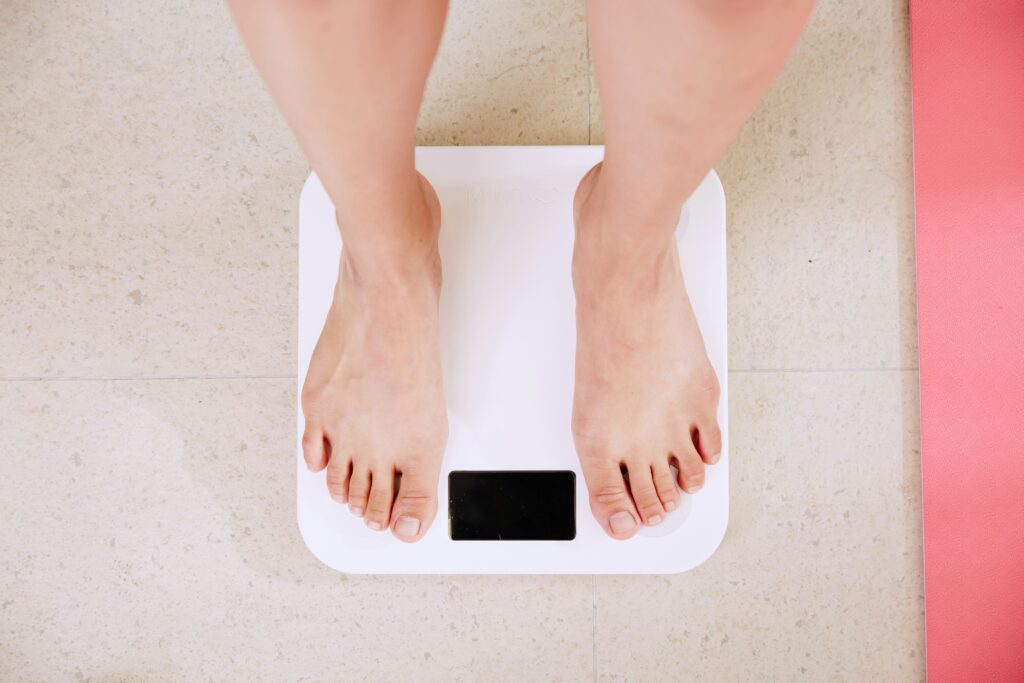A healthy diet and balanced lifestyle are essential for both improved weight management and overall well-being. Keeping a diet and weight journal, exercising frequently, and looking for social support are some strategies for losing weight.
Being overweight raises the risk of major health issues like heart disease, high blood pressure, and type 2 diabetes.
Despite any benefits their supporters may assert, “crash diets” are not a long-term answer. To lose weight safely and maintain that weight loss over time, it is imperative to make small, long-lasting, and healthy lifestyle adjustments.
Ten weight-management tips are offered in this article.
10 tricks for Successful Weight Loss

By doing a few doable actions, people can reduce their weight and contribute to its maintenance. These consist of:
1. Enjoy a variety of lively nutritious meals.
The basis of a person’s diet should consist of nutritious meals and snacks. Making sure that every meal includes protein, complete grains, fruits and veggies is an easy method to make a meal plan. A daily diet of 25 to 30 grams (g) of total fiber is recommended. Reliable source.
Reduced consumption of saturated fats, which have a strong correlation with the prevalence of coronary heart disease, and the elimination of trans fats from the diet should also be goals.
Alternatively, people can eat unsaturated fats such as monounsaturated fatty acids or polyunsaturated fatty acids.

Nutrient-dense and nutritious foods include the following:
- fresh produce and fruits
- fish, beans, nuts, and seeds
- entire grains, like oatmeal and brown rice
Limit your intake of the following foods:
- foods that have extra sugar, butter, and oils, such as processed or fatty red meats
- baked goodies
- Processed foods low in nutrients, such as cookies or chips
- A person may occasionally become deficient in essential vitamins and minerals as a result of eliminating particular items from their diet.
- While on a weight loss program, a registered dietitian nutritionist (RDN) can offer advice on how to consume adequate nutrients.
2. Maintain a weight and food journal.
One useful strategy for effectively losing weight is self-monitoring. A paper diary, smartphone app, or specialized website can be used by people to keep track of all the foods they eat each day. By keeping a weekly weight log, they can also track their development.
People are more likely to maintain a weight loss program if they can recognize physical changes and measure their progress in tiny steps. But it’s crucial to monitor if it becomes compulsive or detrimental to one’s mental well-being.
3. Take part in regular exercise and physical activity

Frequent exercise is essential for mental and physical well-being. Successful weight loss frequently depends on increasing physical activity frequency in a methodical and intentional manner.
The American Heart Association (AHA) suggests engaging in moderate-intensity daily activities, including brisk walking, for 150 minutes per week.
It is possible for those who are not typically physically active to progressively increase their exercise frequency and intensity. The most long-term strategy to guarantee that regular exercise gets ingrained in their lifestyle is this one.
People may benefit from tracking their physical activity in the same way that meal logging might psychologically aid in weight loss. Numerous free smartphone apps can support users in maintaining their confidence, accountability, and motivation as their fitness levels rise.
If someone is new to exercising and finds the idea of a complete workout daunting, they can start by engaging in the following exercises to assist them get more exercise:
Using the stairs
Parking further away from a building entrance, raking leaves, strolling a dog, gardening, dancing, and doing outdoor games
Before beginning an exercise program, those with a low risk of coronary heart disease are unlikely to need a medical evaluation.
However, some people, notably those with diabetes, may benefit from a prior medical checkup. Anyone who wants to know how much exercise is safe can consult a medical expert.
4. Get rid of liquid calories
Drinking sugar-sweetened soda, tea, juice, or wine can result in consuming hundreds of calories every day. Because they add more energy content without providing any nutritional value, these are referred to as “empty calories.”
People can stick to water or unsweetened tea and coffee unless they eat a smoothie in place of a meal. You can add flavor to the water by adding a fresh orange or lemon.
Don’t mistake thirst for hunger. Between planned meal times, a person can frequently quench their appetite with a glass of water.
5. Control portions and measure servings

Any food consumed in excess, particularly calorie-dense foods, can cause weight gain.
For many persons who lack access to measuring devices or do not wish to use them, estimating portions is a practical and useful skill.
When dining out, the following size comparisons can be helpful for tracking food intake:
- When calculating serving sizes for fruits and vegetables, a fist is roughly equal to one cup.
- A tennis ball is roughly equal to ½ cup when it comes to measuring amounts of pasta or rice.
- When measuring a portion of fish, poultry, or other meats and meat substitutes, a deck of cards is roughly equal to three ounces.
- When measuring an amount of any nut butter, olive oil, or salad dressing, a thumb is about equal to one tablespoon.
- When the right instruments are not accessible, these approximate sizes can assist people in controlling their food intake.
6. Eat with awareness
Mindful eating, which is being completely conscious of why, how, when, where, and what they consume, may be beneficial to a lot of people.
Making healthier dietary choices could result from people becoming more aware of their bodies.
In addition to trying to eat more slowly and savor their food, attentive eaters focus on the flavor. A 20-minute meal duration enables the body to process all of the satiety cues.
It’s crucial to remember that many “all-natural” or low-fat foods are not always healthy options and to concentrate on feeling satisfied rather than full after eating.
7. Cue control and stimulation
Numerous environmental and social signals may promote unwarranted eating. For instance, some people find it difficult to pass a candy bowl to someone else without eating a piece, and others are more prone to overeat when watching television.
People can think of methods to modify their routine to limit these triggers by being conscious of what might make them want to nibble on empty calories.
8. Make a plan
Weight loss will be more substantial if you stock up on wholesome foods for planned meal plans. Making healthier food choices can also be aided by prepping, such as washing and peeling fruits and vegetables.
Keep supplies on hand to prepare quick, wholesome meals, and limit the quantity of overly processed snacks and desserts in the house. This can reduce mindless eating and facilitate the selection of healthier foods.
Making meal plans in advance of social gatherings or dining establishments may help facilitate the process.
9. Look for social assistance
A key component of a successful weight loss journey is accepting the support of loved ones. While some people would choose to share their progress on social media, others might want to invite friends or family to attend.
Additional sources of assistance could be:
A supportive social network group, individual therapy sessions, fitness clubs, or collaborative employee support initiatives at work
10. Remain upbeat

People may become disheartened if their weight does not decrease as quickly as they had hoped because weight loss is a gradual process.
Some days will be harder than others to maintain a weight reduction or maintenance program. Perseverance and not giving up when self-change appears too difficult are essential for a successful weight-loss program.
It may be necessary for some people to reset their objectives by altering their workout routines or the overall number of calories they want to consume.
Maintaining a positive attitude and persevering in your efforts to overcome the obstacles to effective weight loss are crucial.
Weight loss

Adhering to a particular eating plan is not necessary for effective weight loss. To attain a negative energy balance, people can instead concentrate on eating foods high in nutrients and exercising more.
Reducing the overall amount of calories consumed is the main factor in weight loss, not changing the ratios of protein, fat, and carbs.
Following a weight maintenance program that incorporates regular exercise and a balanced diet is the greatest strategy to prevent gaining back the weight you’ve lost.
Those without obesity-related health issues and with a body mass index (BMI) of 30 or above may benefit from prescription weight-loss drugs. They may also be appropriate for those with obesity-related conditions and a BMI of 27 or higher.
However, only lifestyle changes should be supported by the usage of Trusted Source drugs. Surgical therapy is a possibility if weight loss efforts prove fruitless and a person’s BMI rises to 40 or above.
Conclusion
In conclusion, achieving your fitness goals is a rewarding journey that requires a balanced approach, dedication, and consistency. Whether your focus is on weight loss, muscle building, or maintaining a healthy lifestyle, combining the right exercise routines with a healthy diet and prioritizing mental wellness is essential. Remember, progress takes time, and every step you take toward your goals counts. Stay motivated, track your progress, and enjoy the journey towards a healthier, stronger, and happier you!
Frequently Ask Questions
1. How can I start my fitness journey if I’m a beginner?
Starting your fitness journey can be intimidating, but the key is to begin with simple steps. Start with cardio workouts like walking, jogging, or cycling for at least 20-30 minutes. Incorporate strength training exercises, focusing on bodyweight movements such as squats, push-ups, and lunges. Make sure to follow a balanced nutrition plan, stay hydrated, and get enough rest to recover. The most important thing is to stay consistent and set realistic goals that you can gradually build on.
2. What is the best diet for weight loss?
For weight loss, focus on a healthy diet that includes nutrient-dense foods. Incorporate lean proteins (chicken, fish, tofu), complex carbohydrates (whole grains, vegetables), and healthy fats (avocado, olive oil). Avoid processed foods and sugary snacks that can contribute to weight gain. A well-balanced diet combined with regular exercise can help you shed unwanted pounds while maintaining muscle mass. Don’t forget to track your calories and portions to stay within your goals.
3. How often should I work out to see results?
To see noticeable results, aim for a combination of cardio and strength training exercises at least 3-5 times a week. For cardio, try to complete 150 minutes of moderate-intensity exercise weekly. Include strength training 2-3 times a week to build muscle. It’s also important to give your body time to recover, so ensure you have at least one or two rest days each week to prevent burnout and injuries.
4. How can I stay motivated to work out regularly?
Staying motivated can be challenging, but setting achievable fitness goals and tracking your progress can help. Make your workouts enjoyable by finding activities you love, such as dancing, swimming, or group fitness classes. Joining a fitness community or partnering up with a friend can also provide extra motivation. Lastly, focus on the progress you’ve made rather than the end result, and celebrate your small wins along the way.



Pingback: How to Establish a Long-Term Exercise Program: Complete Guide
Pingback: How to Establish a Morning Routine That Increases Vitality : Complete Guide